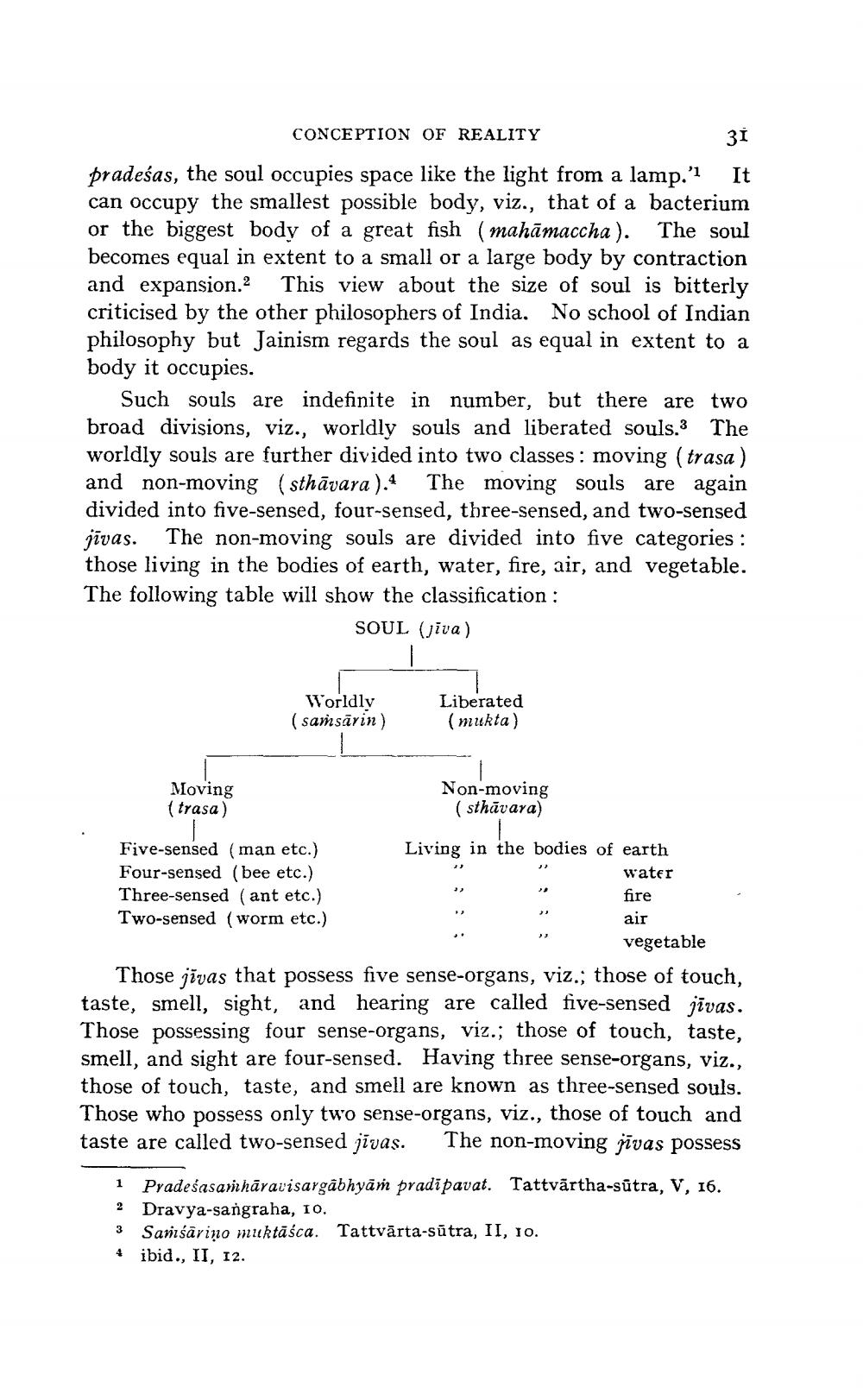________________
CONCEPTION OF REALITY
31
pradeśas, the soul occupies space like the light from a lamp.' It can occupy the smallest possible body, viz., that of a bacterium or the biggest body of a great fish (mahāmaccha). The soul becomes equal in extent to a small or a large body by contraction and expansion. This view about the size of soul is bitterly criticised by the other philosophers of India. No school of Indian philosophy but Jainism regards the soul as equal in extent to a body it occupies.
Such souls are indefinite in number, but there are two broad divisions, viz., worldly souls and liberated souls. The worldly souls are further divided into two classes: moving (trasa) and non-moving (sthāvara).4 The moving souls are again divided into five-sensed, four-sensed, three-sensed, and two-sensed jīvas. The non-moving souls are divided into five categories : those living in the bodies of earth, water, fire, air, and vegetable. The following table will show the classification :
SOUL (jiva)
Worldly (saṁsārin)
Liberated (mukta)
Moving trasa)
Non-moving
(sthāvara)
Five-sensed (man etc.)
Living in the bodies of earth Four-sensed (bee etc.)
water Three-sensed (ant etc.)
fire Two-sensed (worm etc.)
air
vegetable Those jīvas that possess five sense-organs, viz.; those of touch, taste, smell, sight, and hearing are called five-sensed jīvas. Those possessing four sense-organs, viz.; those of touch, taste, smell, and sight are four-sensed. Having three sense-organs, viz., those of touch, taste, and smell are known as three-sensed souls. Those who possess only two sense-organs, viz., those of touch and taste are called two-sensed jīvas. The non-moving jīvas possess
1 Pradeśasamhāravisargābhyāṁ pradipavat. Tattvārtha-sútra, V, 16. 2 Dravya-sangraha, 10. 3 Savśārino muktāśca. Tattvārta-sūtra, II, 10.
ibid., II, 12.




